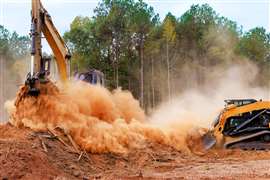SAEMA introduces new guidance
09 March 2015
SAEMA, the association representing the façade access systems sector, has published three new guidance documents.
The first covers rescue and planning, and the second how to determine the necessary loads to comply with the requirements of BS EN 1808, the European standard which prescribes the manner in which suspended access equipment should be designed.
The third, and latest, is a guide to using components of existing building maintenance systems (BMUs) as anchorage points for industrial rope access equipment - a cause of increasing concern to the Association which promotes safety and best practice as its primary objective.
SAEMA’s member companies are responsible for the installation and maintenance of both temporary and permanent access systems at many of the UK’s landmark sites, including 30 St Mary Axe (The Gherkin) and 122 Leadenhall Street (The Cheesegrater).
The seven-page ‘Rescue and Planning’ document explaining what to do in the event of a mechanical or electrical failure, is designed to provide information and guidance for duty holders - building owners, main contractors and facilities managers - who are responsible for the management and safe use of both permanent and temporary façade access systems.
It covers the relevant regulations and standards, the necessity to have a rescue plan in place, and includes a rescue flow chart highlighting the options and actions to be taken. For example, can remote controls be used to recover the operatives and restore normal working?
‘Determining the loads used in BS EN 1808’ is an 11-page document from SAEMA containing easy-tounderstand charts and diagrams, plus examples of various load cases from ‘normal working’ through to ‘parking plus storm winds‘ and ‘extreme conditions’.
The latest document has been published to assist anyone who is considering using existing suspended access equipment as anchorage for industrial rope access. There have been an increasing number of instances where installed suspended access systems have been used incorrectly and therefore dangerously as anchors, said SAEMA.
It covers the key topics including change of use, loadings and the requirements of the relevant regulations and standards.
Barry Murphy, SAEMA chairman, said, “These are just the first in a series of guidance documents currently being developed by the association’s technical committee. In every case they reflect latest thinking and best practice.”
The new documents are free to download from the recently expanded SAEMA website www.saema.org




